How to Avoid Neurodiversity Bias in your Recruitment Process
The pursuit of diversity is now vital in Australian tech workplaces. Diversity takes on many forms: gender, religion, and sexuality – just to name a few. We know that a workplace that embraces inclusivity leads to a positive environment.
But what about embracing diverse ways of thinking and learning? Are employers embracing neurodiverse applicants?
In this blog, we’ll look at the meaning of neurodiversity and some tips to avoid bias in your recruitment process.
Defining Neurodiversity
Neurodiversity can be defined as ‘the diversity of human brains and minds’ – a variation of how the human brain processes and functions. It covers a range of conditions, some of which are well known and others less so.
Typically, these can be broken down into four categories:
- Clinical neurominorities – including Autism and ADHD. These are conditions you are born with that impact behavioural skills.
- Applied neurominorities – including Dyslexia and Dyspraxia. These are conditions that impact applied educational skills.
- Acquired (Chronic) – neurominorities linked to brain injury or illness.
- Acquired (Transient) – neurominorities that are linked to a response to a physical or mental health condition.
Neurodivergence in the Workforce
Every mind brings unique qualities to the table and in a perfect world, every great candidate would be given equal opportunity to secure a role – regardless of whether they identify as neurodivergent or neurotypical.
However, the conventional recruitment process isn’t always as inclusive as it could be. This often means that those who identify as neurodivergent don’t always have the opportunity to compete for roles where they could add immense value.
A study run by Autism Spectrum Australia estimated that 1 in 70 people in Australia are on the autism spectrum. However, only 38% currently participate in the workforce in comparison with 84.1% of people without disabilities.
An inclusive workforce celebrates the differences between employees. It does away with neurodiversity bias by recognising the benefit of balanced teams that include a diverse range of brilliant minds.
Addressing Neurodiversity Bias in Recruitment Processes
To accommodate neurodivergent workers in technology roles, organisations need to consider every facet of their employee and recruitment experience.
But where should you begin? How do you ensure you’re promoting diversity and inclusion and that your technology and digital recruitment process is fair and equal?
Leading tech giants like Microsoft and Dell have started to pave the way, working from the perspective that it’s the interview process that poses a stumbling block for neurodivergent people.
Let’s examine some of the obstacles and practical solutions to address the neurodiversity bias within the recruitment process.
Overhaul Your Job Adverts
Traditional job ads can be lengthy and difficult to read. Challenge yourself to read the advert with fresh eyes – does it need to be that long and is it written clearly and concisely? And most importantly, does it state that neurodiverse applicants are welcome to apply?
It’s also worthwhile examining how accessible your job adverts are. Do you have accessibility tags on PDF files so that those who require assistive technologies can read them? Is there an easy-to-follow table of contents?
Accessibility tags allow you to make reading job adverts easier on all devices and operating systems and they reflect positively on you as an inclusive business.
Adapting the Interview Process
The typical job interview process can be problematic for someone with Autism or ADHD. Interviews are stressful for most people but can be especially difficult for someone who identifies as neurodivergent.
There may be undue pressure for someone to present as neurotypical and if they struggle with verbal communication, the interview process is unlikely to go well. These traditional interviews tend to be more of a test of social competence than the ability to perform specific job tasks of a particular role. A few approaches you could consider using to help you to adapt the interview process could include:
- Sending neurodiverse candidates the questions in advance of the interview
- Instead of using a panel of interviewers, conduct a series of sequential interviews with one interviewer at a time
- Consider asking the candidate to perform a task to demonstrate their skills to the interviewer
- Ask direct questions with obvious connections to the technology roles. For example, rather than asking ‘What do you find the most challenging?’ try to be more specific and say, ‘Name the biggest technical challenge you had in your last role and what you did to solve it.’
- Get creative! Work trials, short internships and practical assessments are all alternative avenues for neurodiverse candidates to demonstrate their talent.
Be Clear with Clear Communication for Preparation
Wherever possible, give your candidates all the information they need to prepare for the recruitment process. Provide clear communication about how to get to the venue and what to expect in the interview – including who they will meet, the length and the format of the interview. Select a quiet spot that is free from distractions and make sure they’ve been informed about any assessment tasks you’d like them to perform, along with any materials you would like them to bring.
Don’t Be Afraid to Ask for Help
To begin your journey towards embracing neurodiversity in your tech office, engage with the experts here at Emanate Technology. Hiring neurodivergent tech professionals has a positive effect on the entire workforce, bringing a whole pool of untapped talent into your organisation – but it can be hard to know where to begin when it comes to overhauling your recruitment process.
As stated in CIPD’s Neurodiversity at Work report, ‘Hiring processes, designed only with neurotypicals in mind, can have the effect of unintentionally excluding neurodiverse talent.’
Summary
Hiring more neurodiverse individuals is just one of the technology industry’s challenges in becoming more inclusive. But the stigma around neurodiverse conditions is fading and tech industry leaders are beginning to understand the benefits of having an inclusive workforce with a unique range of skillsets and experiences.
There is no ‘one size fits all’ approach when it comes to recruiting neurodiverse candidates, so a recruitment process that remains flexible and treats candidates as individuals is key. If you’re looking to begin your neurodiverse hiring journey in technology roles, talk to our team of experts today.
At Emanate Technology, our technology and digital recruitment specialists have a wealth of knowledge on how you can find and nurture the best talent for your business. Get in touch with our team to find the best tech talent in Adelaide, Brisbane, Canberra and Melbourne.






